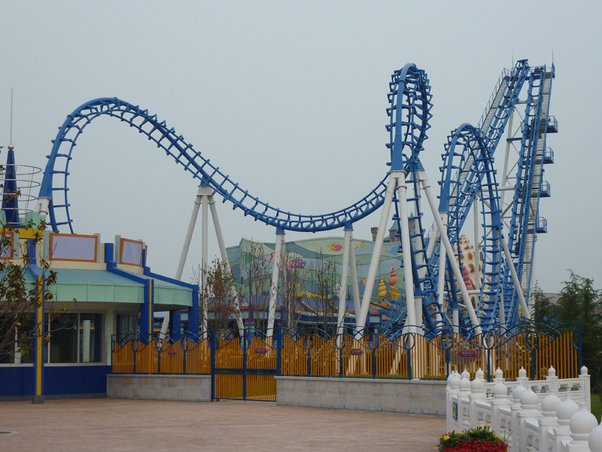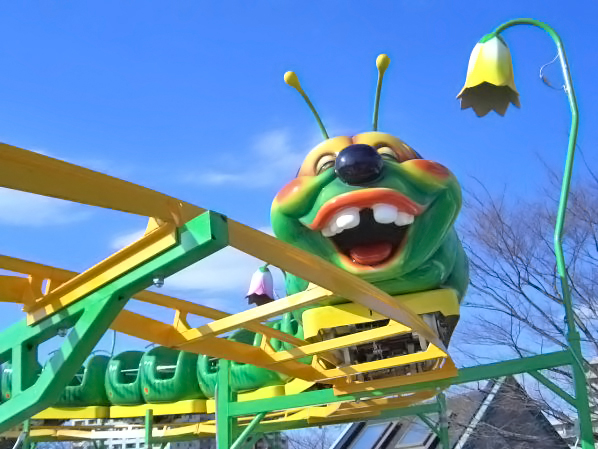Roller coasters are rides that are mostly found in amusement parks. They are made up of wheeled cars that are interconnected. The cars are designed to move on a pair of rails crafted onto a structure made of steel or wood. Once the passengers hop onto the ride and are safely latched to their sears, the cars begin to move up a steep incline and then roll downwards, propelled by gravity. They are eventually braked to a stop where they ride began, allowing the passengers to alight. They can be categorized into either large or small roller coaster. Below are top 8 differences between large roller coaster and small roller coaster.

1. Small roller coasters are compact:
Small roller coasters are great for small children owing to their whimsical look, smaller drops and less curves. Their compact nature also makes them less complex when it comes to how they are wired. As compared to larger roller coaster rides for sale, they require less material while manufacturing.
2. Small roller coasters are less expensive as compared to larger roller coasters
As may be expected, the small roller coasters are inexpensive because of their size and the less complex engineering done while producing them.
3. Small roller coasters are easily accessible to children:
Children who are too young to ride larger roller coasters are able to enjoy the smaller drops and curves from the small roller coasters just like the dragon roller coasters and wacky worm roller coasters for sale. The good thing about Small roller coasters is that they come fitted with kid-sized safety latches which make them an ideal choice for kids to enjoy.

4. Larger roller coasters move faster:
Due to their size, large roller coasters have gravity which makes them go faster than smaller roller coasters. They are able to build up higher speed because of the large drops they make and the number of tracks they move on.
5. Larger roller coasters are long in comparison to the smaller roller coasters:
Large roller coasters have more tracks which make them longer. They are more ideal for a busy amusement park where queues of people line up waiting for a chance to enjoy the ride. Small roller coasters on the other hand are both suitable for a home backyard and amusement park as well. Kids may be limited from using the large roller coasters especially if they are not tall enough to fit within the seats with the safety devices on.
6. Larger roller coasters need more space:
Their large size makes them larger roller coasters and disco rides for sale to require more space in terms of even height. They need clear space to allow them to make the big rise and drops freely and for the safety of the users. This makes the smaller roller coasters more ideal for people with limited spaces.
7. Smaller roller coasters turn quicker:
Smaller roller coasters have lighter cars which makes it easier for them to turn quickly and more abruptly. Due to their tight turns, smaller roller coasters are a favorite for children. For the larger roller coasters’, slowing down becomes a little harder in comparison with the smaller roller coaster because of their large mass.
8. Larger roller coasters have larger loop shapes:
The size of a roller coaster automatically determines what size its loops will be. The larger the roller coaster is, the bigger and more complex its loops are. Want to get more about these rides? You can go to Bestonamusementrides.com